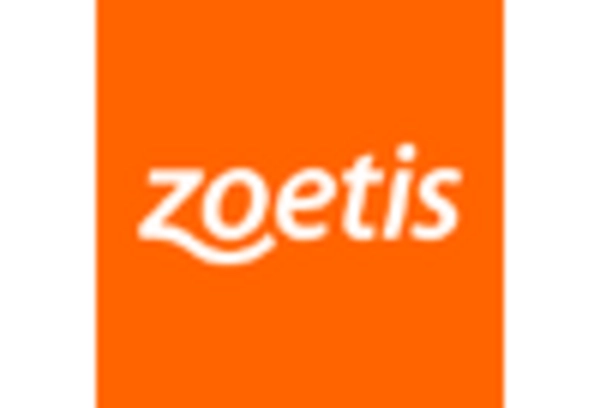Rising Incidence of Canine Diseases
The increasing prevalence of chronic diseases in dogs, such as arthritis, hip dysplasia, and degenerative joint diseases, drives the Canine Stem Cell Therapy Market. As pet owners seek effective treatments for their ailing pets, the demand for innovative therapies rises. Reports indicate that approximately 20% of dogs over the age of seven suffer from arthritis, highlighting a significant market opportunity. This trend suggests that as more pet owners become aware of the benefits of stem cell therapy, the market is likely to expand. Furthermore, advancements in veterinary medicine and the growing acceptance of regenerative therapies contribute to the industry's growth, as veterinarians increasingly recommend stem cell treatments for various conditions.
Growing Research and Clinical Trials
The surge in research and clinical trials focused on canine stem cell therapies is a key driver of the Canine Stem Cell Therapy Market. Numerous studies are being conducted to explore the efficacy of stem cell treatments for various conditions, including orthopedic and neurological disorders. This research not only validates the therapeutic potential of stem cells but also enhances the credibility of these treatments among veterinary professionals. As more positive outcomes are reported, the acceptance of stem cell therapy is likely to grow within the veterinary community. Furthermore, increased funding for veterinary research initiatives may lead to the development of new applications for stem cell therapies, thereby expanding the market.
Increasing Pet Ownership and Spending
The rise in pet ownership and the corresponding increase in spending on pet healthcare significantly influence the Canine Stem Cell Therapy Market. Recent statistics indicate that pet owners are willing to invest more in advanced medical treatments for their pets, with expenditures on veterinary care rising steadily. This trend is particularly evident in urban areas, where pet owners often seek specialized treatments, including stem cell therapy. As the humanization of pets continues, owners are more inclined to explore innovative therapies that promise better health outcomes. Consequently, this growing willingness to spend on advanced veterinary care is likely to enhance the demand for canine stem cell therapies, thereby driving market growth.
Regulatory Support for Stem Cell Therapies
Regulatory bodies are increasingly recognizing the potential of stem cell therapies in veterinary medicine, which positively impacts the Canine Stem Cell Therapy Market. Recent guidelines and frameworks have been established to ensure the safety and efficacy of stem cell treatments for animals. This regulatory support not only fosters innovation but also instills confidence among pet owners and veterinarians regarding the use of these therapies. As more companies enter the market with compliant products, the availability of stem cell therapies is expected to increase. This trend suggests that as regulatory environments become more favorable, the market for canine stem cell therapy will likely experience accelerated growth.
Technological Advancements in Veterinary Medicine
Technological innovations in veterinary medicine are propelling the Canine Stem Cell Therapy Market forward. Enhanced techniques for harvesting and processing stem cells have improved the efficacy and safety of treatments. For instance, the development of minimally invasive procedures allows for easier collection of stem cells from adipose tissue. This advancement not only reduces recovery time for dogs but also increases the appeal of stem cell therapy among pet owners. Additionally, the integration of advanced imaging technologies aids veterinarians in diagnosing conditions that may benefit from stem cell treatments. As these technologies continue to evolve, they are expected to further stimulate market growth, making stem cell therapy a more viable option for treating canine ailments.

















Leave a Comment